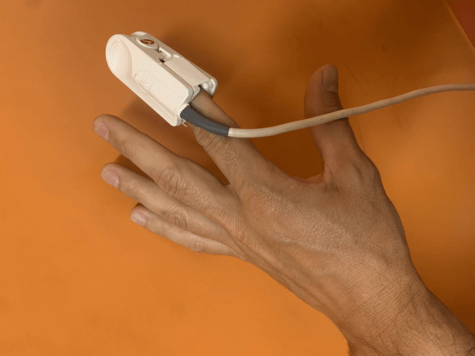BERLIN, Germany — Pulse oximetry is a quick, simple test that commonly monitors patients with asthma and chest infections, as well as measuring pulses and oxygen saturation. Some medical practices have even started using this method for detecting carbon monoxide poisoning, despite supportive evidence remaining unclear. Now, European researchers claim that pulse oximetry is an unreliable way to detect poisoning and therefore shouldn’t be used in this way.
Carbon monoxide poisoning can be easily missed due to the colorless and odorless nature of the gas, making it that much harder to treat in a swift and timely manner. Upon exposure, the gas enters the body through the bloodstream and latches onto hemoglobin, which is the molecule that normally carries oxygen throughout the body. When this gas finds its way inside, it can deprive the body of oxygen and quickly become fatal.
So far, the most dependable way to catch the poisoning is with a blood test. Although it’s a trustworthy method, it isn’t always the most efficient.
“If we suspect carbon monoxide poisoning, we want to be able to treat patients quickly with oxygen in the ambulance or in the emergency room, and that means we need a test that can be done immediately onsite. A blood test is reliable, but not practical,” explains Dr. Mathilde Papin from the emergency department at Nantes University Hospital in France in a media release.
Therefore, researchers and clinicians have turned to pulse oximetry, a technique requiring much less effort. To see if this technique is actually appropriate, Dr. Papin and researchers conducted a search for all previous clinical trials that compared pulse oximetry with blood tests in adult and child patients and healthy individuals.

Out of the 19 studies, the team combined 11 of them to pool data on over 2,000 people and compare testing methods. They found that pulse oximetry accurately detected positive and negative cases 77 percent and 83 percent of the time, respectively. Overall accuracy came in at 86 percent.
“At 23%, the false negative rate with pulse oximetry is too high for reliably triaging patients with suspected carbon monoxide poisoning. This method is not accurate enough and should not be used in clinical practice,” Dr. Papin reports.
The team is looking forward to evaluating various alternative methods that can be dependably used in the field. They hope to find one that screens both quickly and accurately within the blood vessels.
The team presented their findings at the European Emergency Medicine Congress.


we have literally known this for at least 20 years. it’s part of standard EMS training, and has been for a LONG time.